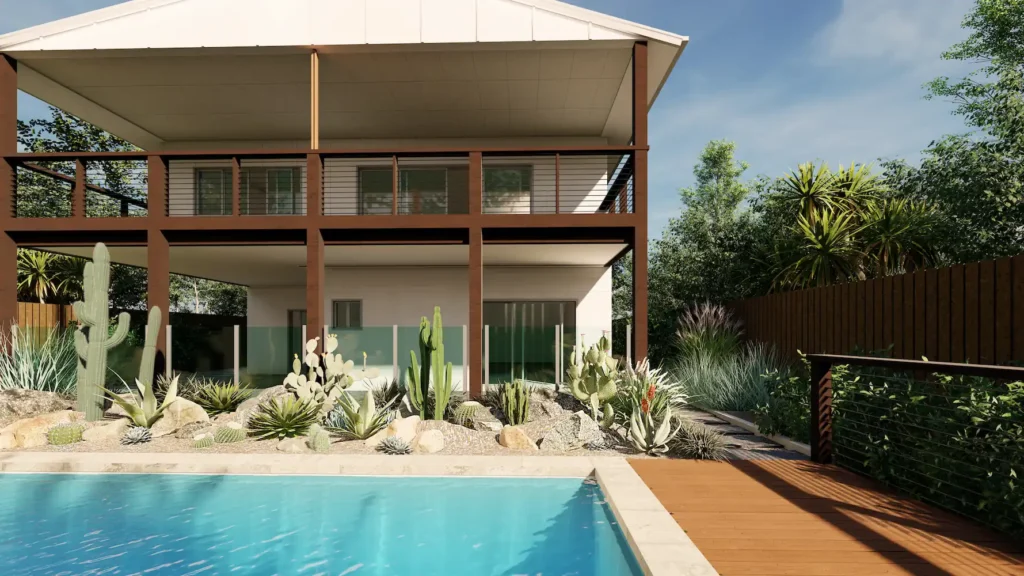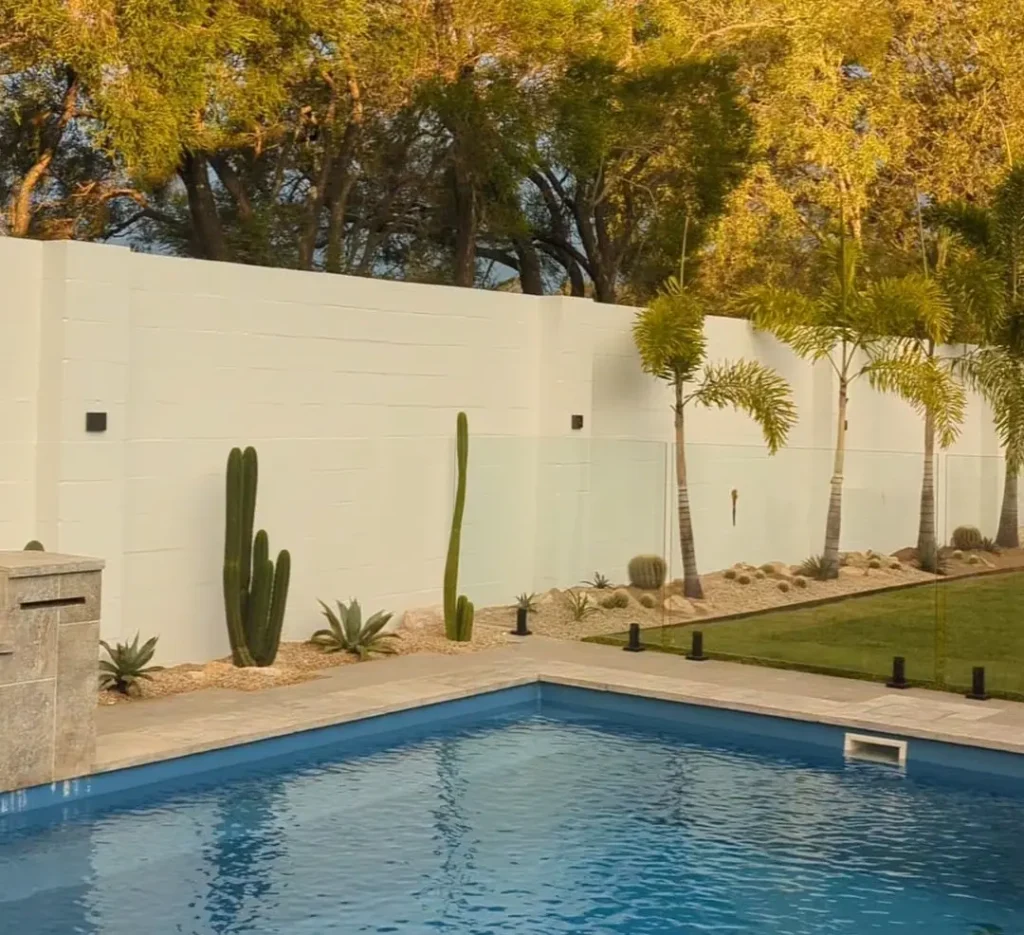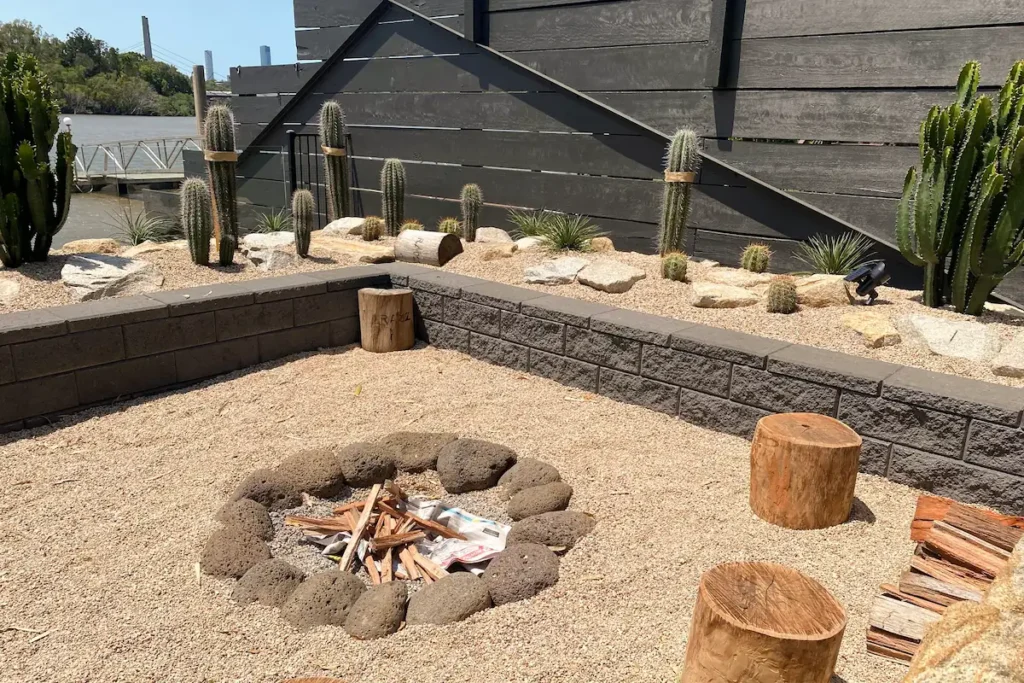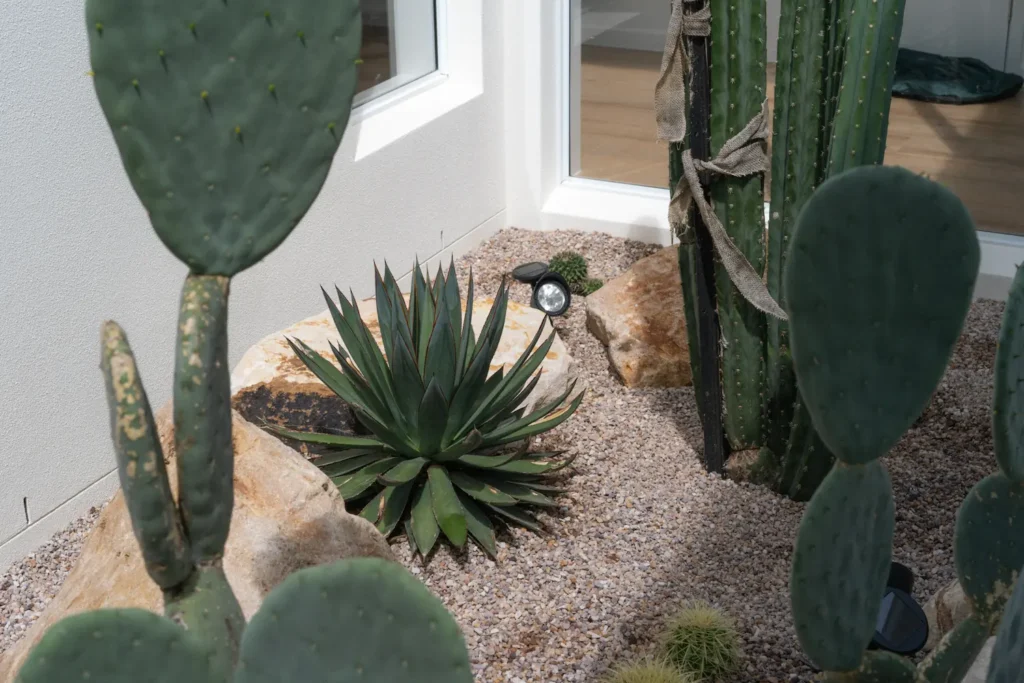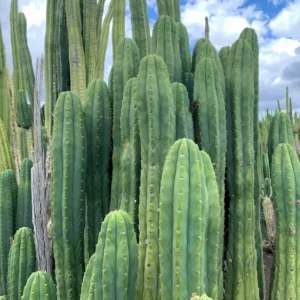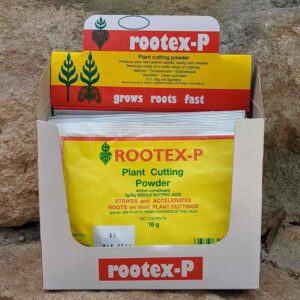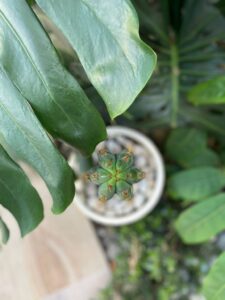Many types of plants have evolved roots that muscle their way through soil or structures to get to water, or to spread out aggressively to steal it from their neighbouring plant rivals. On the other hand you have plants like cacti, that have some of the least destructive root systems of any landscaping plant. By comparison their roots are shallow, fine, and designed to spread out far and wide to absorb rainfall. This is great news for homeowners as they are perfectly safe to plant near pools, paving, retaining walls, and other built features.
In this article, we’ll explain what cactus roots are like, how they grow, and why they’re ideal for low-risk landscaping.
Anatomy of Cactus Roots
Cactus roots are highly specialised for survival in dry environments. They have a thin outer layer that absorbs water quickly, and soft, spongy tissue inside to store moisture. Unlike tree roots, they stay flexible rather than turning woody. For the aspiring botanists out there, we call this minimal lignification.
Some species develop a thick, downward growing single tap root, like a carrot, which provides stability and access to slightly deeper soil moisture. These usually remain under 60 cm in length and do not spread laterally like tree roots.
What People Mean by “Destructive Roots” and “Invasive Roots”
When people worry about destructive roots, they’re thinking of plants that:
- Lift paving or crack concrete;
- Invade and crack pipes;
- Undermine pools;
- Push retaining walls.
And when people worry about invasive roots, they’re talking about plants that:
- Spread aggressively through garden beds and suffocate other plants;
- Form dense mats which may not necessarily be destructive to structures, but render the ground unworkable;
- Spread into neighbouring properties.
Examples of Destructive and Invasive Plants
Some plants are destructive, some are invasive, and a few manage to be both.
In Australian gardens, common destructive offenders include Ficus species (like the Moreton Bay fig), Eucalyptus (gum trees), Jacaranda, and Camphor Laurel. Invasive plants, on the other hand, spread aggressively but don’t necessarily cause structural damage. Classic examples include running bamboo, mint, and morning glory.
And if you’ve ever planted Chinese Elm, you’ll know the frustration of dealing with both problems at once.
But cacti are a completely different story.
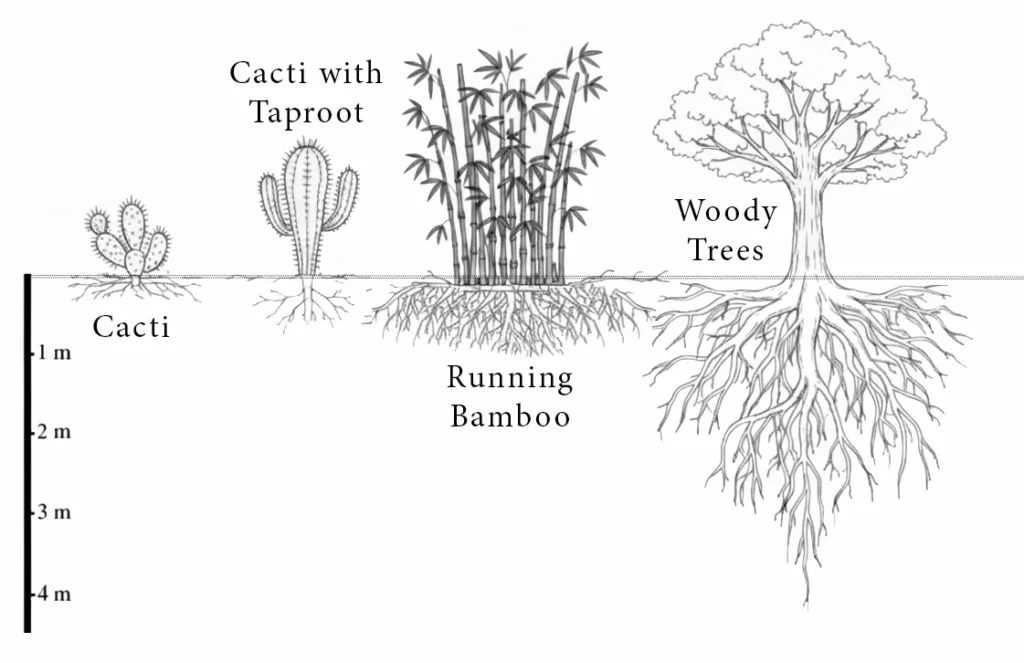
Why Cactus Roots Aren’t Destructive
- Their soft, fibrous roots have evolved for maximum moisture absorption, not structural force. Their gentle roots are only strong enough to grow through soft soil gaps. They cannot push through anything compact or too solid.
- Cacti like to keep their roots near the surface, because in the deserts where they evolved the rainfall doesn’t penetrate the soil very deeply. They don’t go “looking” for water in the same way most tree roots do.
- Roots only grow when there is water available for them to drink. Otherwise, they go dormant.
- Cactus roots have a natural ‘recycling’ process, where old roots die off and are replaced near the base, which is part of the reason they never get woody.
These qualities make cacti ideal to plant near pools, decks, retaining wall, raised gardens, home foundations and rooftop gardens.
Designing a cactus garden near your home or pool?
See how we approach Cactus Garden Design & Landscaping to create low-risk outdoor spaces that last.
